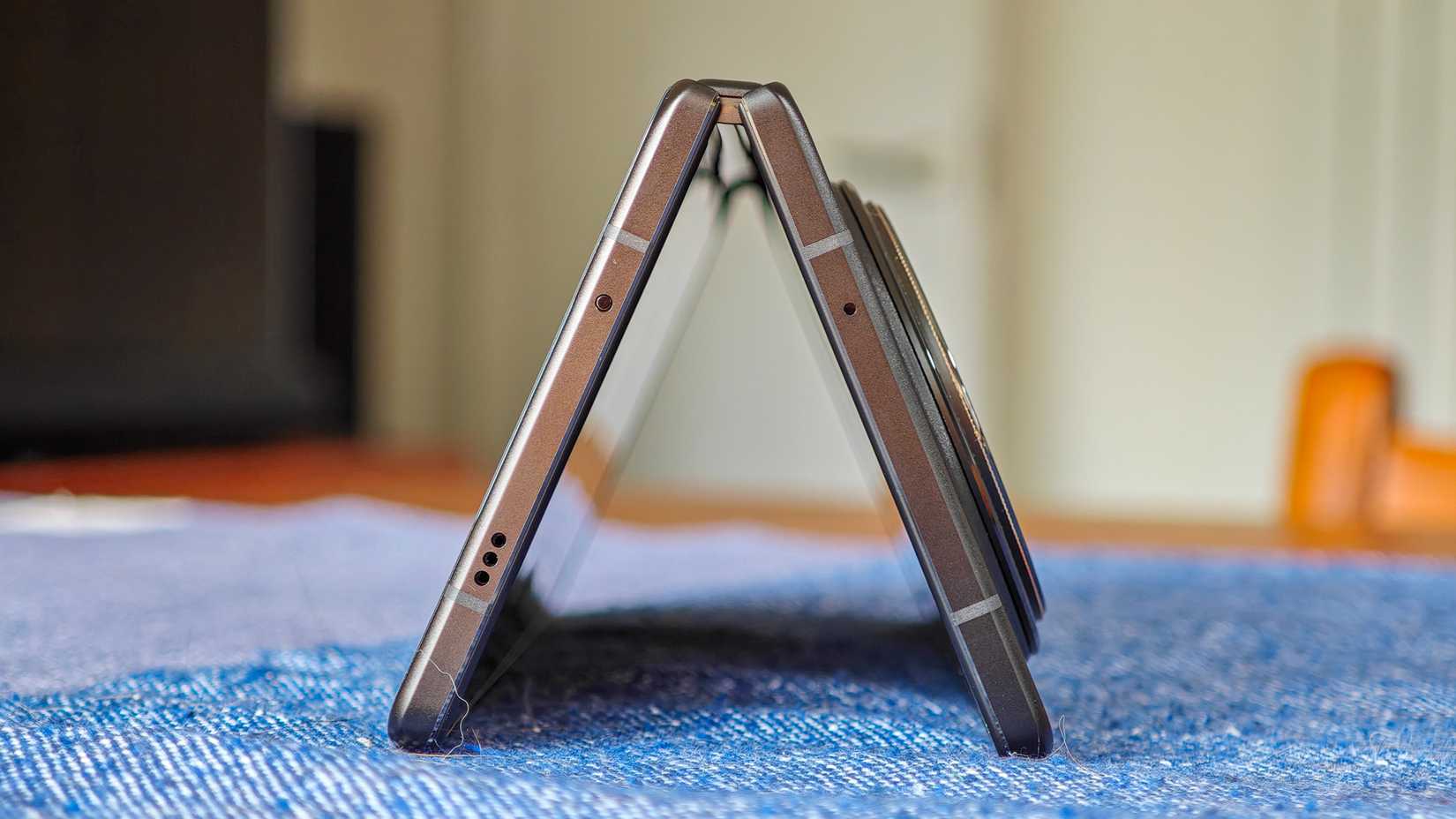Foldables remain the ultimate test of smartphone engineering. These smartphones redefine design, usability, and performance in a single form factor.
With expansive inner displays and pocketable outer screens, they promise the best of both worlds — productivity and portability.
Every brand sees foldables as a chance to innovate, but for Google, which controls Android itself, it is an opportunity that carries even greater weight.
The Pixel 10 Pro Fold feels like a cautious update rather than a smartphone trying to make a statement.
But let’s be real, the latest Google Pixel 10 Pro Fold doesn’t quite rise to the challenge.
While it corrects some of the original Pixel Fold’s mistakes, it still feels like a cautious update rather than a smartphone trying to make a statement or move the needle much further ahead.
And compared to global competition that’s delivering thinner builds, bigger batteries, faster charging, and truly flagship-level cameras, Google’s foldable just doesn’t match up. It’s not just restrained, it’s lagging far behind.
Google’s foldable shows progress, but is far from a leader
Getting the basics right isn’t the same as being competitive
To Google’s credit, the Pixel 10 Pro Fold is its most refined foldable yet. But that in itself doesn’t say much.
Yes, the outer display finally feels usable. It’s wide enough to type and scroll comfortably without forcing you to open the device every single time. Similarly, the hinge is smoother and less fragile.
Moreover, the addition of an IP68 water and dust resistance is a genuine engineering milestone for a foldable device.
The inner display has also evolved. You’ll find slimmer bezels, higher brightness levels, and a generally better touch response, all of which contribute to making a solid everyday screen for reading, watching movies, social media, and multitasking.
More so, coupled with Android’s maturing large-screen experience, the device finally feels functional instead of an evolving experiment.
Performance also looks better on paper.
The new Tensor G5 chipset brings with it improved efficiency, smoother multitasking, and a strong dose of AI smarts. Sure, the Tenso G5 isn’t about to top benchmark charts, but it’s good enough for day-to-day use.
Combined with the bright screens, sturdy hinge mechanism, and class-leading water resistance, the Pixel 10 Pro Fold feels like a complete flagship. But complete isn’t the same as competitive. And that is a widening gap.
The Pixel 10 Pro’s biggest problem
Performance, battery, and cameras that just can’t keep up
The biggest issue with the Pixel 10 Pro Fold isn’t what it does right. It’s about what it doesn’t. This device is meant to lead Android’s foldable evolution, but just like Google’s conventional flagship, it continues to play it safe.
Performance is the obvious first weak link. Google’s Tensor lineup has never been about raw speed, and while its AI smarts are commendable, that doesn’t excuse the gap in sustained performance, heat management, or, for that matter, battery life.
For a phone that costs nearly $1800, it’s a gap that shouldn’t exist, and users shouldn’t have to settle for something that is good enough.
For a phone that costs nearly $1,800, users shouldn’t have to settle for something that is good enough.
Battery life continues to stay middling.
Competing foldables offer larger and larger batteries, while Google’s pedestrian for 2025 standards battery and slow charging make long days of multitasking and content consumption feel risky.
It perpetually feels like you’re not going to get through the day, which isn’t the experience you should feel.
Then there’s the camera system.
Pixel hardware built its reputation on photography excellence, but the foldable lineup feels like a compromise at the very least.
Instead of matching the Pixel 10 Pro’s best sensors, Google relies on older hardware. Even when boosted by computational tricks, there’s only so much that a dated sensor can pull off.
The results are fine, reasonably good in daylight, but certainly not flagship-level.
Meanwhile, the ultrawide and telephoto shots are downright disappointing, and don’t get me started on the hardware’s limitations that show up in low-light conditions.
It’s clear that Google’s strategy leans too heavily on software magic. But foldables don’t need just clever algorithms; they need top-tier optics and hardware to back them up.
The competition is leaving Google in the dust
Global brands are raising the bar for foldables
While Google keeps trudging along at its own pace, other brands are showing what true foldable ambition looks like.
There’s the obvious Samsung competition, but look at what’s happening with Chinese foldable smartphones, and you get an idea of what is capable today.
For example, the Vivo X Fold 5 packs a 6000mAh battery, charges faster both wired and wirelessly, and manages to be both thinner and lighter than the Google Pixel 10 Pro Fold.
The outer display is a full-fledged flagship screen. The hinge is smooth, the crease is borderline invisible, and the build is every bit as premium as you’d want from a top-tier flagship.
It’s impossible to justify Google’s conservative approach when the rest of the market has leaped ahead.
All that is great, but the biggest difference lies in imaging and photography capabilities.
The smartphone packs a triple 50MP setup across wide, ultrawide, and telephoto lenses, delivering real flagship results.
The consistency across lenses and lighting conditions, and images that can keep up with the best of standard flagships, proves that foldables no longer have to compromise.
With the right hardware in place, these foldables can help you get proper reach, low noise levels, strong dynamic range, and excellent low-light photography without relying on post-processing magic.
Vivo isn’t alone in this. Major brands like Honor, Huawei, Xiaomi, and Oppo have all proven that foldables can deliver class-leading performance, slim construction, and top-tier cameras that can match up with the best smartphones.
All that makes the Pixel 10 Pro’s limitations stand out even more. It’s impossible to justify Google’s conservative approach when the rest of the market has leaped ahead.
Google’s foldable strategy needs a rethink
Let me be clear. The Pixel 10 Pro Fold isn’t a bad phone at all. It’s just not setting any benchmarks.
The 10 Pro Fold is a foldable design for Pixel loyalists or those obsessed with the software experience over everything else.
But that’s not what the foldable category should be about. And especially when it comes to Google’s foldables.
These phones are supposed to showcase the absolute best that a company can deliver, both in hardware and software.
They’re meant to be a showcase of what the brand is capable of, and right now, Google’s foldable tells a story of a company holding back.
But here’s the deal: Google can no longer afford to treat the foldable category as an experiment or a demonstration tool for Android’s software capabilities.
For it to succeed and thrive as a viable contender for one of the best foldable smartphones on the market, Google must build a foldable that competes head-on with the very best in the world in terms of hardware, imaging, and design.
The next Pixel Fold can’t just be content with catching up, it needs to set a benchmark for what an Android foldable can be.
The next Pixel Fold can’t just be content with catching up; it needs to set a benchmark for what an Android foldable can be.
And that means designing a phone without compromises, not one that hides them behind AI enhancements, many of which are barely more than interesting experiments.
And above all, it means expanding the vision beyond what’s available in the US market, because foldables are thriving globally, and Google’s limited feature set is a significant detriment in making these the aspirational products the category represents.
The competition is already proving that foldables don’t have to mean compromise. It’s high time that Google stopped playing it safe and built a foldable designed for the future.
Google Pixel 10 Pro Fold
- SoC
-
Google Tensor G5
- RAM
-
16GB
- Storage
-
256 GB / 512 GB/ 1TB with Zoned UFS
- Battery
-
5015mAh
The Pixel 10 Pro Fold offers Gemini AI features and can withstand an impressive 10 years of screen folding. This smartphone is an investment that’ll last for years to come.


